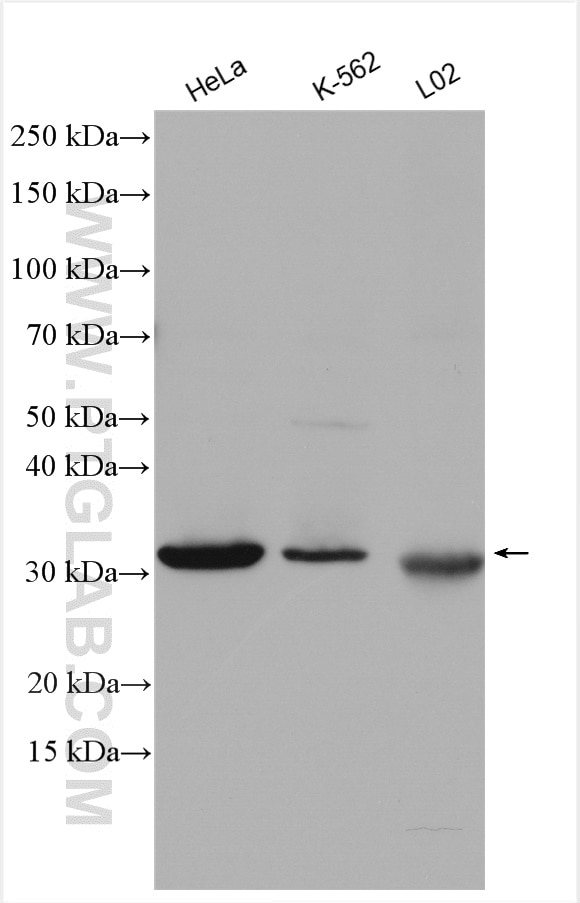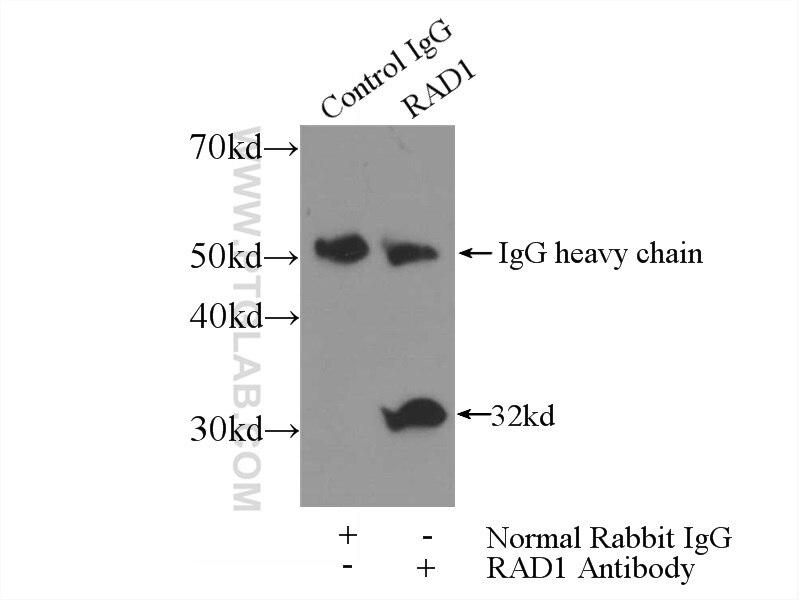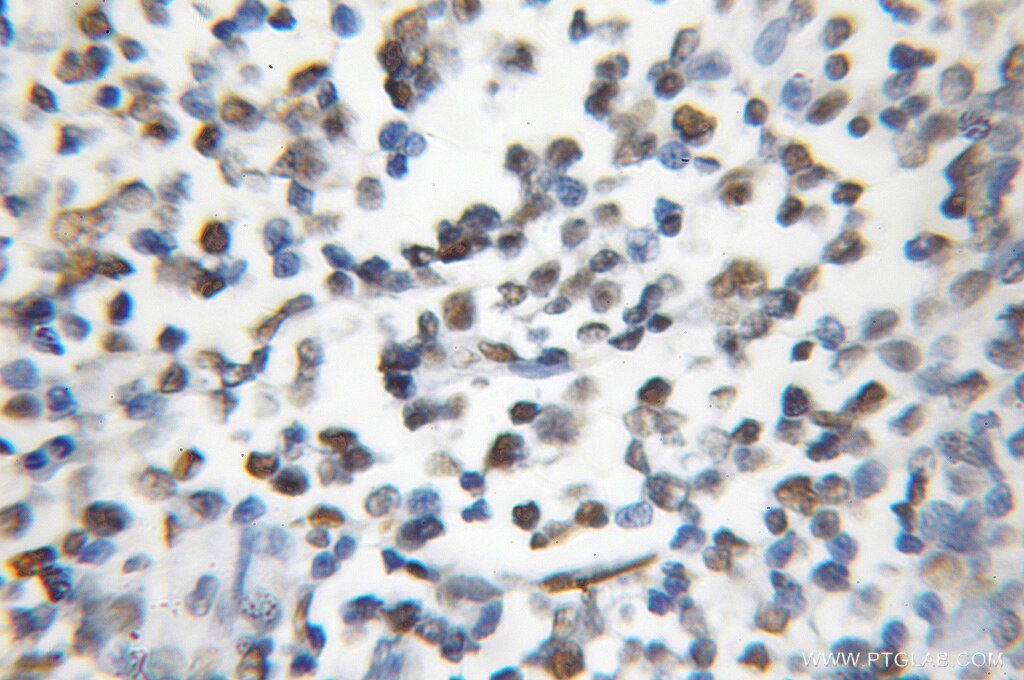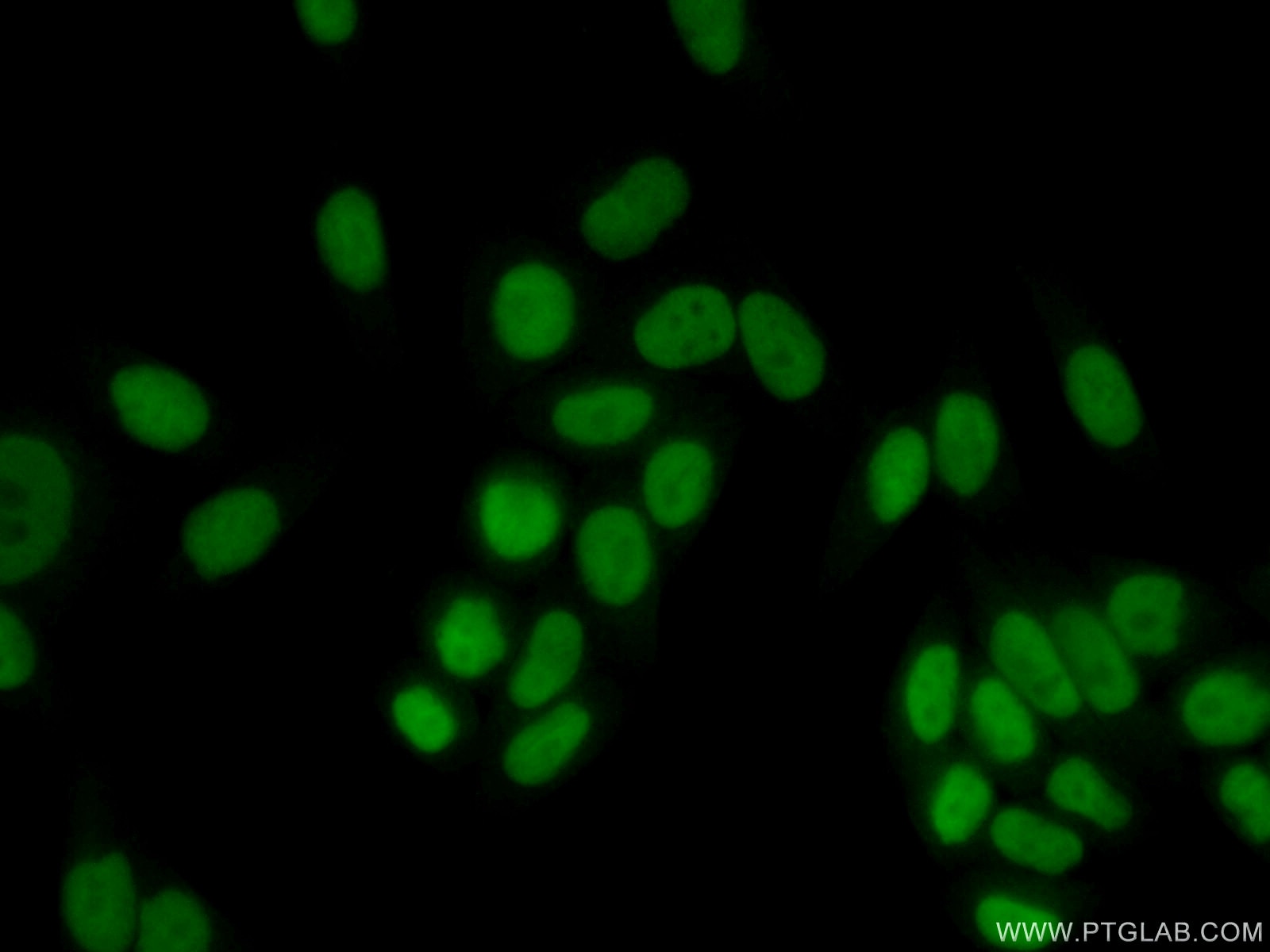Anticorps Polyclonal de lapin anti-RAD1
RAD1 Polyclonal Antibody for WB, IP, IF, IHC, ELISA
Hôte / Isotype
Lapin / IgG
Réactivité testée
Humain et plus (1)
Applications
WB, IHC, IF/ICC, IP, ELISA
Conjugaison
Non conjugué
N° de cat : 11726-2-AP
Synonymes
Galerie de données de validation
Applications testées
| Résultats positifs en WB | cellules HeLa, cellules K-562, cellules L02 |
| Résultats positifs en IP | cellules HeLa |
| Résultats positifs en IHC | tissu de lymphome humain il est suggéré de démasquer l'antigène avec un tampon de TE buffer pH 9.0; (*) À défaut, 'le démasquage de l'antigène peut être 'effectué avec un tampon citrate pH 6,0. |
| Résultats positifs en IF/ICC | cellules HeLa |
Dilution recommandée
| Application | Dilution |
|---|---|
| Western Blot (WB) | WB : 1:500-1:3000 |
| Immunoprécipitation (IP) | IP : 0.5-4.0 ug for 1.0-3.0 mg of total protein lysate |
| Immunohistochimie (IHC) | IHC : 1:20-1:200 |
| Immunofluorescence (IF)/ICC | IF/ICC : 1:50-1:500 |
| It is recommended that this reagent should be titrated in each testing system to obtain optimal results. | |
| Sample-dependent, check data in validation data gallery | |
Applications publiées
| WB | See 5 publications below |
Informations sur le produit
11726-2-AP cible RAD1 dans les applications de WB, IHC, IF/ICC, IP, ELISA et montre une réactivité avec des échantillons Humain
| Réactivité | Humain |
| Réactivité citée | rat, Humain |
| Hôte / Isotype | Lapin / IgG |
| Clonalité | Polyclonal |
| Type | Anticorps |
| Immunogène | RAD1 Protéine recombinante Ag2316 |
| Nom complet | RAD1 homolog (S. pombe) |
| Masse moléculaire calculée | 32 kDa |
| Poids moléculaire observé | 32 kDa |
| Numéro d’acquisition GenBank | BC006837 |
| Symbole du gène | RAD1 |
| Identification du gène (NCBI) | 5810 |
| Conjugaison | Non conjugué |
| Forme | Liquide |
| Méthode de purification | Purification par affinité contre l'antigène |
| Tampon de stockage | PBS avec azoture de sodium à 0,02 % et glycérol à 50 % pH 7,3 |
| Conditions de stockage | Stocker à -20°C. Stable pendant un an après l'expédition. L'aliquotage n'est pas nécessaire pour le stockage à -20oC Les 20ul contiennent 0,1% de BSA. |
Informations générales
RAD1, cell cycle checkpoint protein, is a component of a heterotrimeric cell cycle checkpoint 9-1-1 complex, that is activated to stop cell cycle progression in response to DNA damage or incomplete DNA replication. RAD1, HUS1 and RAD9 are central components of a DNA damage-responsive protein complex. Testis-specific disruption of RAD1 in mice resulted in defective double-strand break repair, depletion of germ cells and infertility (PMID: 35133274). RAD1 has 3 isoforms produced by alternative splicing.
Protocole
| Product Specific Protocols | |
|---|---|
| WB protocol for RAD1 antibody 11726-2-AP | Download protocol |
| IHC protocol for RAD1 antibody 11726-2-AP | Download protocol |
| IF protocol for RAD1 antibody 11726-2-AP | Download protocol |
| IP protocol for RAD1 antibody 11726-2-AP | Download protocol |
| Standard Protocols | |
|---|---|
| Click here to view our Standard Protocols |
Publications
| Species | Application | Title |
|---|---|---|
Oncogene DNA damage-induced translocation of mitochondrial factor HIGD1A into the nucleus regulates homologous recombination and radio/chemo-sensitivity. | ||
J Mol Cell Biol SUMO-1 modification of FEN1 facilitates its interaction with Rad9-Rad1-Hus1 to counteract DNA replication stress. | ||
Am J Physiol Cell Physiol Succinylation at a key residue of FEN1 is involved in the DNA damage response to maintain genome stability. | ||
Comp Biochem Physiol C Toxicol Pharmacol The rad1 gene in Rainbow Trout (Oncorhynchus mykiss) is highly conserved and may express proteins from non-canonical spliced isoforms. | ||
Mol Med Rad1 attenuates DNA double-strand breaks and cell cycle arrest in type II alveolar epithelial cells of rats with bronchopulmonary dysplasia |





